Anichkov bridge
9 photo with description12.05.2020 09:28
12.05.2020 09:28
Andrey Panevin

Anichkov Bridge is one of the most beautiful bridges in St. Petersburg.,
The first bridge across the , Fontanka, along , Nevsky Prospect, was made of wood and was built by soldiers of the battalion of Lieutenant Colonel-Engineer Mikhail Anichkov, which is why the name of the bridge came from.
Anichkov Palace, I. Shuvalov's estate. Third quarter of the 18th century.
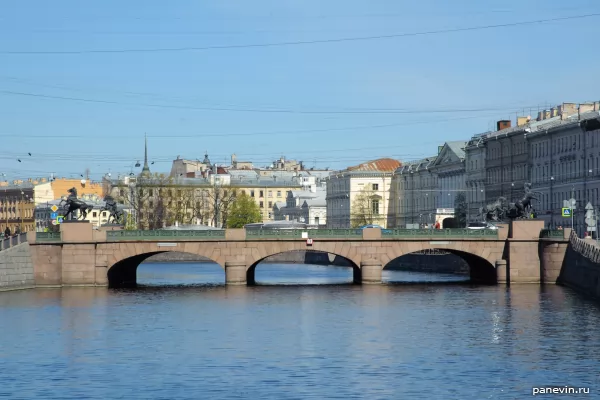
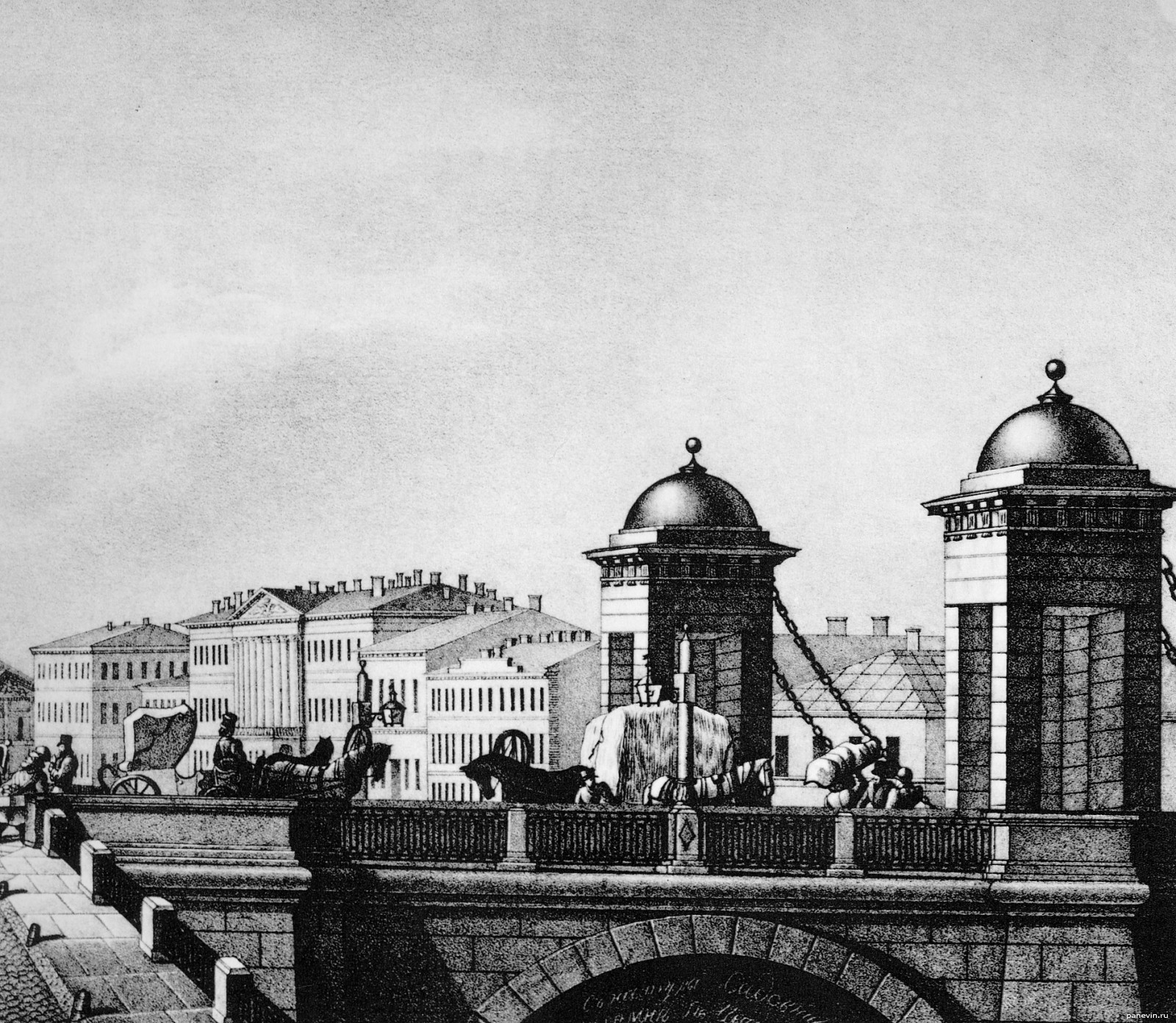
In 1715, Peter I ordered to build a bridge on this place, which was done by May 1716.
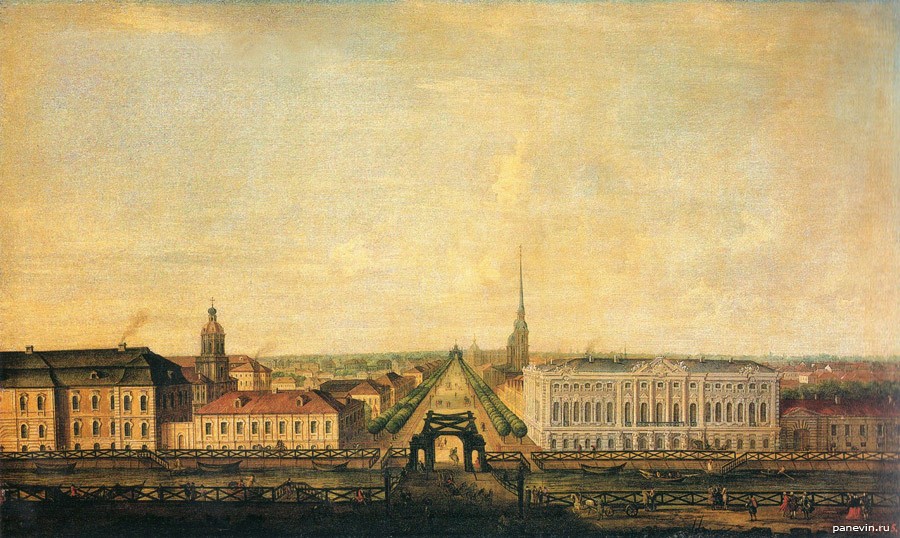
The wooden bridge was rebuilt in 1721, 1749
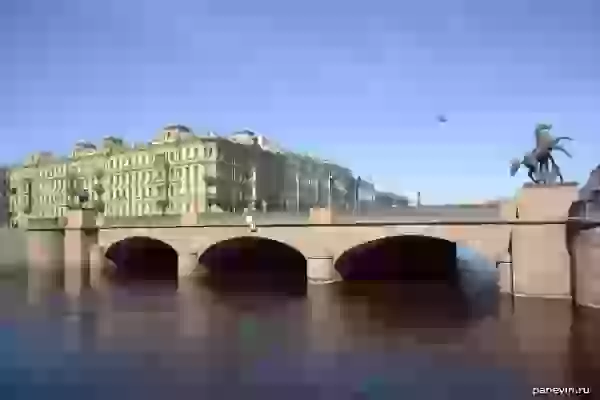
The current three-span stone bridge was opened to traffic on November 20, 1841.
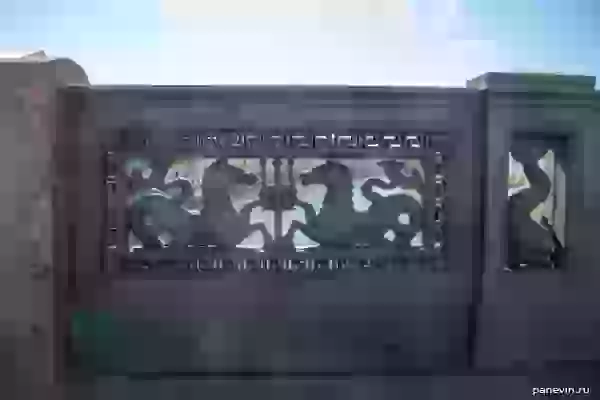
The cast iron fence with bas-reliefs of seahorses and mermaids was made by the architect A.P. Bryullov based on the lattice created by the architect K. Schinkel for the Palace Bridge in Berlin.
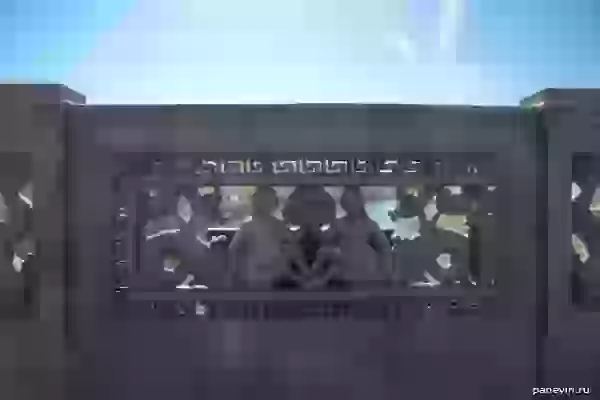
Lattice of Anichkov bridge
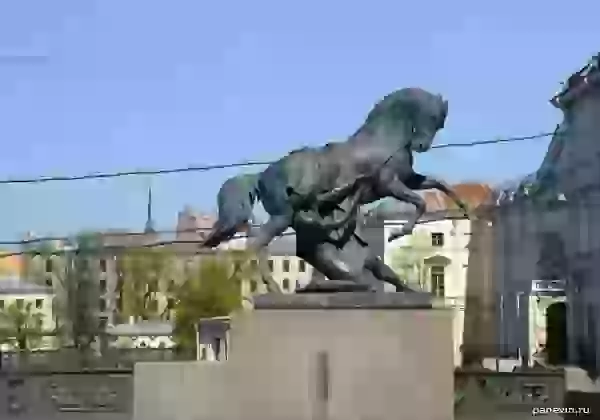
The sculptural group "A young man kneeling down, tames the wild run of a horse." Despite the fact that Baron Petr Karlovich Klodt began to create sculptural groups "Taming the Horse by Man" 10 years before the construction of the bridge, all sculptures were cast only in 1851. The fact is that the first cast sculptures were presented by Nicholas I to the Prussian king Frederick William IV, the latter were presented to the king of both Sicilies for the hospitality shown to the Russian empress during her trip to Italy. The sculptural group "A man is thrown to the ground, the horse almost broke free". The sculptural group "A man with a mighty effort pulls down a horse." The sculptural group "The young man conquered the horse". According to Klodt's idea, the viewer, passing from one group to another, as if "reads" the plot. In the last two groups, the horses are already savvy. During the Blockade, in October 1941
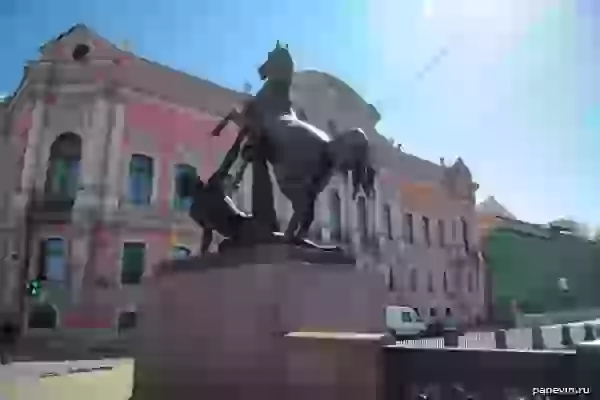
The sculptural group "The man is thrown to the ground, the horse has almost escaped free"
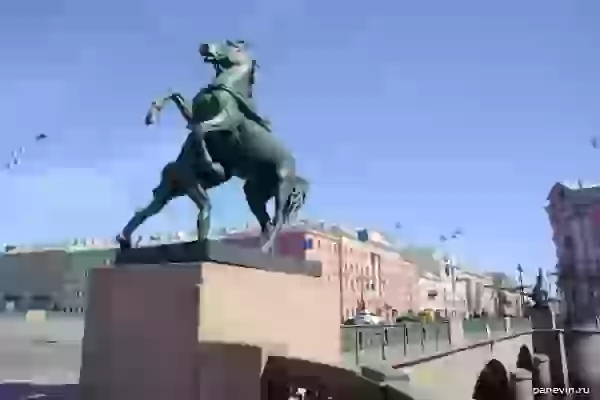
The sculptural group "A man with a mighty effort pulls down a horse"
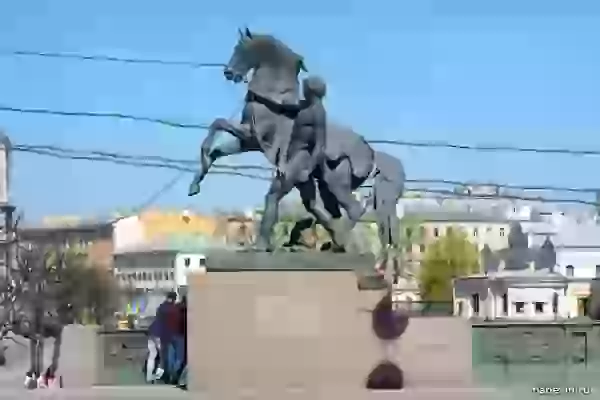
The sculptural group "The young man conquered the horse"
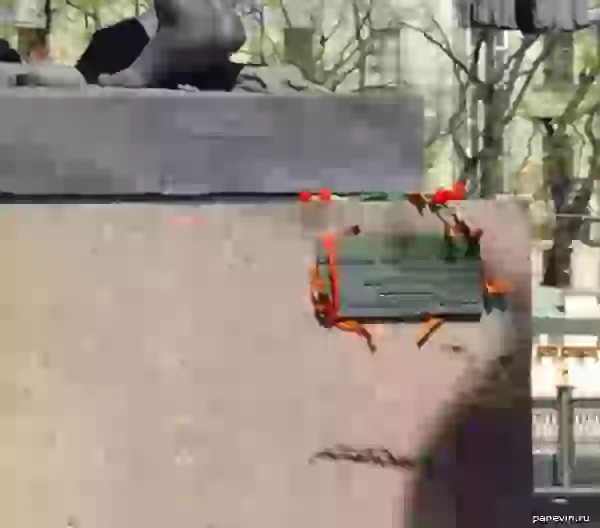
years, the sculptures were removed and covered (one group was buried in the garden of the Anichkov Palace, the rest were hidden). During the war, one of the pedestals was hit by a splinter of a German shell, as the memorial plaque reads: "This is the trace of one of 148479 shells fired by the Nazis in Leningrad from 1941-1944."
The bridge has a comic name "Bridge of 16 eggs". But before the revolution there was a joke among the townspeople: "How many eggs are there on the Anichkov Bridge?" Because bridges have always been strategic objects, then a policeman was on duty at each, so any St. Petersburg resident would confidently answer such a question: "eighteen!"


In 1715, Peter I ordered to build a bridge on this place, which was done by May 1716.

The wooden bridge was rebuilt in 1721, 1749
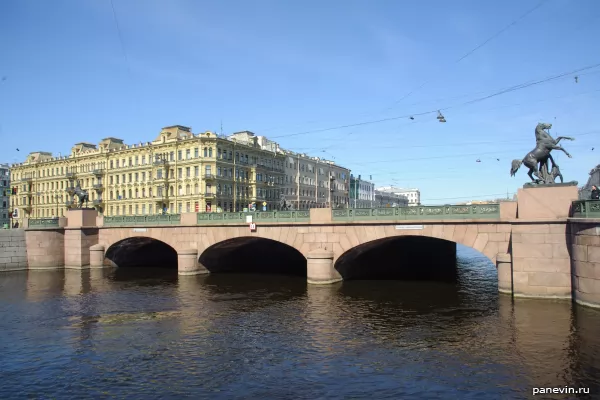
The current three-span stone bridge was opened to traffic on November 20, 1841.
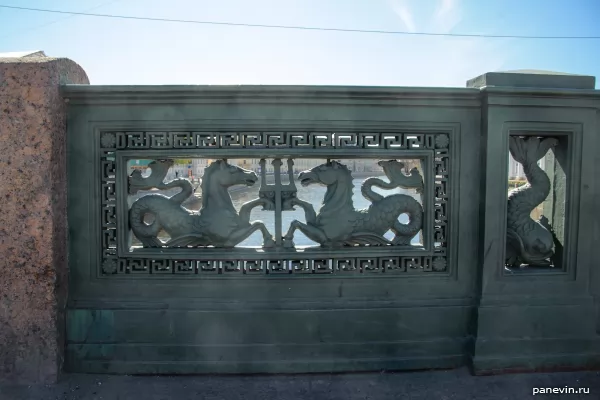
The cast iron fence with bas-reliefs of seahorses and mermaids was made by the architect A.P. Bryullov based on the lattice created by the architect K. Schinkel for the Palace Bridge in Berlin.
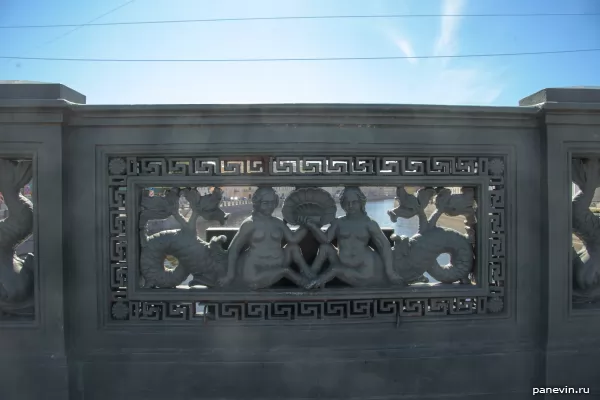
Lattice of Anichkov bridge
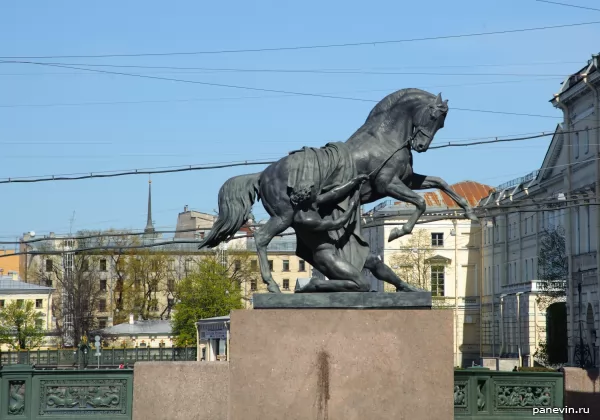
The sculptural group "A young man kneeling down, tames the wild run of a horse." Despite the fact that Baron Petr Karlovich Klodt began to create sculptural groups "Taming the Horse by Man" 10 years before the construction of the bridge, all sculptures were cast only in 1851. The fact is that the first cast sculptures were presented by Nicholas I to the Prussian king Frederick William IV, the latter were presented to the king of both Sicilies for the hospitality shown to the Russian empress during her trip to Italy. The sculptural group "A man is thrown to the ground, the horse almost broke free". The sculptural group "A man with a mighty effort pulls down a horse." The sculptural group "The young man conquered the horse". According to Klodt's idea, the viewer, passing from one group to another, as if "reads" the plot. In the last two groups, the horses are already savvy. During the Blockade, in October 1941
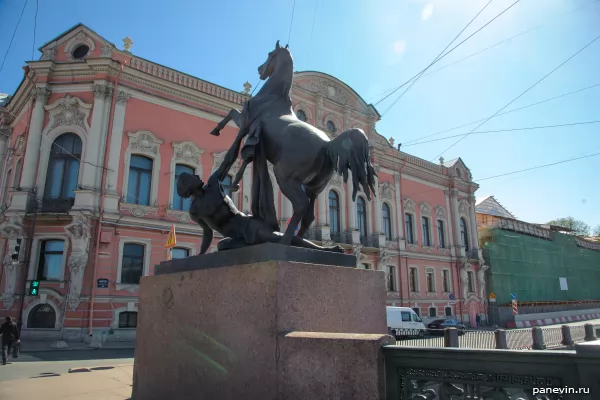
The sculptural group "The man is thrown to the ground, the horse has almost escaped free"
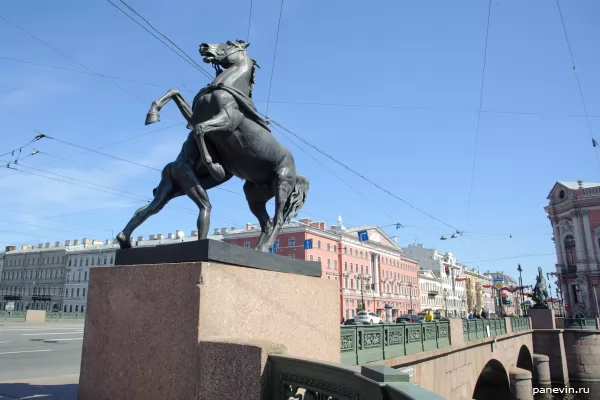
The sculptural group "A man with a mighty effort pulls down a horse"
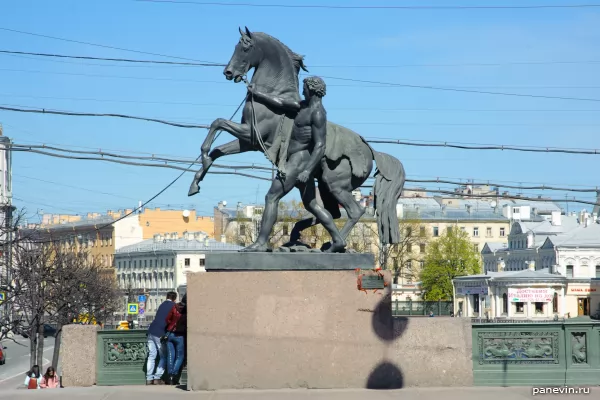
The sculptural group "The young man conquered the horse"
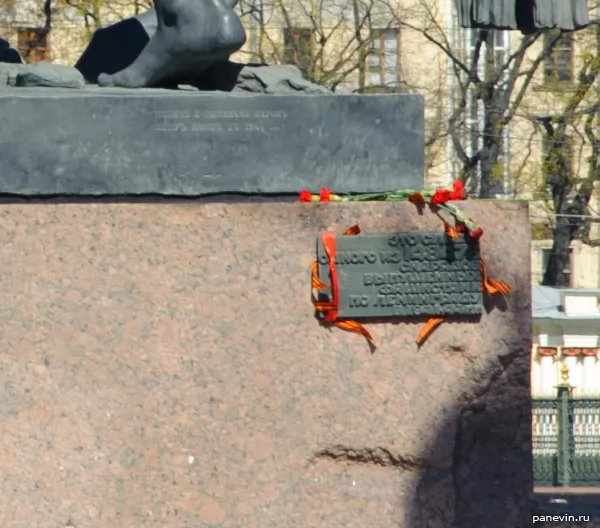
years, the sculptures were removed and covered (one group was buried in the garden of the Anichkov Palace, the rest were hidden). During the war, one of the pedestals was hit by a splinter of a German shell, as the memorial plaque reads: "This is the trace of one of 148479 shells fired by the Nazis in Leningrad from 1941-1944."
The bridge has a comic name "Bridge of 16 eggs". But before the revolution there was a joke among the townspeople: "How many eggs are there on the Anichkov Bridge?" Because bridges have always been strategic objects, then a policeman was on duty at each, so any St. Petersburg resident would confidently answer such a question: "eighteen!"
Share:
Themes: Anichkov bridge 1 attractions 134 bridges 1 Fontanka 3 photos 417 St.-Petersburg 119
Ticket sales through JetRadar.com service without commissions and markups.
← Blog
anichkov_most
blog





